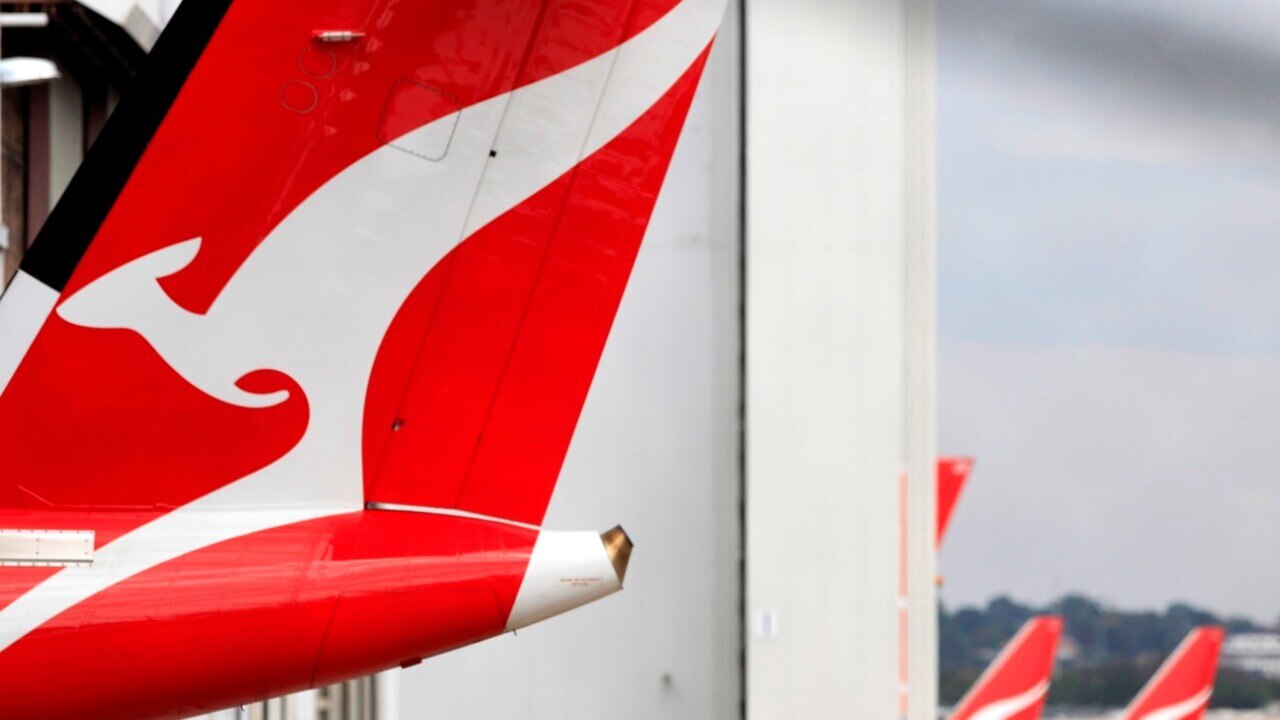Huge Qantas profits tipped to become the airline’s ‘new normal’ thanks to strong balance sheet
The record annual profit flagged by Qantas could become the ‘new normal’ for the airline thanks to a strong balance sheet, little competition and insatiable demand.

Business
Don't miss out on the headlines from Business. Followed categories will be added to My News.
The massive annual profit flagged by Qantas for the 2023 financial year could well become the “new normal” for the airline, with one analyst predicting even bigger gains in the years ahead.
For the year to June 30, Qantas is expecting a record underlying profit of between $2.425bn and $2.475bn, representing a $4.3bn turnaround from last year’s $1.8bn loss.
JPMorgan analyst Anthony Longo said even with significant expenditure as the fleet is refreshed, Qantas is well positioned to improve its bottom line further.
“It has taken material costs out of its business which are likely to be ongoing savings from this financial year, travel demand remains strong and its balance sheet strength came as a particular surprise,” Mr Longo said.
“In our view Qantas’s fundamentals are unquestionably strong and reflected by structural changes made since the pandemic and now displayed by a string of sequential positive earnings results.”
With net debt levels well below expectation and Qantas in “a favourable competitive position both domestically and internationally”, Mr Longo predicted pre-tax profits would continue to grow.
For the 2024 financial year, a $2.5bn result is forecast, climbing to $2.8bn the following year in line with steady revenue growth.
Prior to the Covid crisis, Qantas managed five consecutive years of profitability with the best result recorded in 2018, a $1.6bn gain.
Jarden analyst Jakob Cakarnis shared the belief Qantas is well-placed to afford a ramp up in capital expenditure, with the airline thought to be facing a $15bn fleet renewal bill in the years ahead.
“Qantas has noted the demand remains strong across its network despite record airfares to offset elevated fuel costs,” Mr Cakarnis said.
“The booking window has firmed since the company’s first half result (of $1.43bn) which is especially significant given the fourth quarter is typically a quieter travel period.”

He also noted that even though airfares are tipped to moderate as more capacity comes into the market, Qantas “expected yields to remain materially above pre-Covid levels”.
UBS analyst Andre Fromyhr predicted domestic fares to remain about 7 per cent above pre-pandemic prices in the year ahead, and international fares 20 per cent higher.
His profit projections had Qantas staying strongly in the black in 2024 and 2025 but falling short of this year’s expected result of around $2.475bn.
Qantas CEO Alan Joyce was in no doubt the airline would be in better shape when he leaves at the end of the year, than when he took over in late 2008.
Speaking at a ground-breaking ceremony for a new flight training centre in Sydney last Friday, Mr Joyce said Qantas had an “amazing position going forward”.
“People were writing us off ten years ago saying Virgin was going to have our lunch and the domestic market was going to be dominated by new players,” Mr Joyce said.
“We have the best full service and the best low-cost carriers in the market, and our loyalty program is the envy of every airline around the globe.”
The airline could expect more competition on the international front with Singapore Airlines announcing a “significant capacity injection” in time for the busy end-of-year holiday season.
Days after Qantas announced its own international capacity boost, Singapore Airlines said it would add a fifth daily flight into Sydney, taking its services beyond pre-Covid levels.
Melbourne is also set to get a fifth daily flight and an extra month of A380 services, while Adelaide, Brisbane and Perth will each get another four flights a week.
The ramp up will begin in late November to help support expected high levels of demand, Singapore Airlines’ regional vice president Louis Arul said.
“The appetite for travel has been robust over the current mid-year holiday period and signs are that demand will remain elevated as we head into the traditionally strong year-end peak,” Mr Arul said.
The extra flights would mean almost 7000 more seats a week between Australia and Singapore through to mid-January.
In December, Singapore Airlines was the third biggest carrier of travellers in and out of Australia after Qantas and Jetstar, with 10.5 per cent of the market.
More Coverage
Originally published as Huge Qantas profits tipped to become the airline’s ‘new normal’ thanks to strong balance sheet





